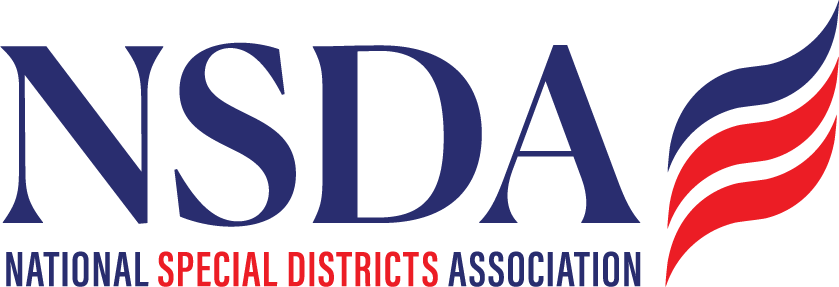Special Districts and Website ADA Compliance Issue Brief
By Mac Clemmens, CEO, Streamline Software for Special Districts
Updated February 24, 2023
Just as buildings must have wheelchair ramps, public websites must have special provisions for users with disabilities. The number of lawsuits rose 56% in 2021, and the penalties for noncompliance are rising—averaging $4,000 for an ADA claim in 2019 to $39,000 in 2022. It’s a situation that The Wall Street Journal calls “very perilous” in a recent article.
Because the majority of new actions are targeting organizations smaller than 30 million in revenue, special districts have emerged as being at risk, as they are often not aware of or prepared to meet web accessibility standards.
Understanding Accessibility Laws

The laws surrounding accessibility are complex and nuanced. There are a few layers of federal regulations further augmented by state regulations in some states. While more and more state laws are emerging with their own timelines and penalties, most districts do not realize that they are already liable for violations of federal laws, which comprise the majority of current actions.
Understanding website accessibility
When special districts have a website, it is required to be technically accessible and have policies and procedures for reporting and remediation.
The Americans with Disabilities Act (ADA) is a civil rights law that prohibits discrimination against individuals with disabilities. Title II of the ADA applies to public entities, which include special districts. This means that special districts have a legal obligation to ensure that their websites are accessible to individuals with disabilities.
The Web Content Accessibility Guidelines (WCAG) are a set of technical standards for web accessibility developed by the World Wide Web Consortium (W3C). Meeting these guidelines can help ensure that websites are accessible to people with a wide range of disabilities, including visual, auditory, physical, and cognitive disabilities. Special districts are required to meet WCAG 2.0 AA, and NSDC recommends that districts conform to WCAG 2.1 AA.
Making websites accessible is not just a legal obligation, it's also good for district communication. Accessible websites can help reach a wider audience, improve user experience, and boost search engine optimization (SEO). In fact, Google has stated that accessibility is a ranking factor in its search algorithm.
Providing accessible websites is the right thing to do. Everyone deserves equal access to information and services, regardless of their abilities. By making websites accessible, special districts can help promote inclusion and equity in their communities.
Improving website accessibility doesn't have to be expensive or time-consuming. Many accessibility improvements can be made with simple changes to website design and content, such as adding alt text to images and ensuring that text has sufficient contrast. There are also free and low-cost tools available to help test and improve website accessibility, such as the Accessibility Insights tool from Microsoft and Google Lighthouse (described below).
What is Google Lighthouse?
A free, open-source tool that anyone can use to scan your webpage to check for accessibility. It is available in the Chrome browser and is also available in Microsoft Edge by hitting F12 or right-clicking on a webpage and clicking “Inspect.”
Lighthouse tests basic webpage conformance to standards such as WCAG, which is one of many requirements for web accessibility. Districts must also scan all pages, PDF documents, maintain an accessibility policy, check for closed captioning on videos to meet federal standards.
Quantifying the risk
Special districts often ask themselves, “What is the actual risk that an ADA claim will affect us?” The results are both surprising and unpredictable.
The overwhelming majority of ADA-related claims never make it to court. They are quietly settled, sometimes forced by an insurer who wants to manage risk without publicly admitting to any wrongdoing or districts whose EPLI insurance doesn’t cover website-related ADA issues (the majority do not).
- More than 2,403 districts affected
- About 6% of all districts in the US, including county-dependent districts, have been fined, received demand letters, or gotten Department of Justice Office of Civil Rights (OCR) letters for website ADA violations in the US.
- That number is expected to exceed 4,000 (10%) by the end of 2024.
- Very few if any, special district insurance policies even partially cover the costs of web accessibility issues
Most insurance carriers, including district statewide insurance pools, do not cover website-specific ADA claims in their EPLI policies. ADA is not covered by cyber, either.
- Median deductible: $5,200
- Median settlement: $25,000
What is my district’s risk now?
One way to assess risk is to scan your site using a free district website accessibility tool, brought to you by the National Coalition of Special Districts and its coalition partners.
Run a free scan at checkmydistrict.org for a comprehensive report and monthly updates to get a sense of your compliance, as well as tips on how to get compliant.
The National Special Districts Coalition is the only national organization representing and advocating for all special districts at a national level. Organized in 2018, a group of five state special districts associations in California, Colorado, Florida, Oregon and Utah established a memorandum of understanding aimed to share resources, best practices and openly network to identify solutions to common problems for special districts across state lines. In 2021, the coalition expanded its mission to include federal advocacy for special districts to receive equitable access to critical programs available to local governments.
Mac Clemmens, the author, is an ADA expert and the CEO of Streamline Software, Inc., regularly speaks on ADA best practices, and has won numerous awards for his work on website accessibility for government organizations. Streamline is a gold-level affiliate member of the National Special Districts Coalition.
For more information about the National Special Districts Coalition, visit www.nationalspecialdistricts.org.
